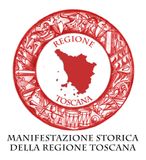Visit the city of Pontremoli

A place of great charm
The city of Pontremoli, described by Frederick II as the "clavis et iannua" (key and gateway) for communications between Tuscany and Lombardy, is a city with very tall towers that dates back to 990 when it served as a stop on the Via Francigena pilgrimage route in the itinerary of the Archbishop of Canterbury, Sigeric, on his way back from his pilgrimage to Rome.
This town, located in the north of the Tuscia Longobardorum, was initially established by the Piagnaro Castle, which has Lombard origins. Its beauty and significance were also recognised by Frederick Barbarossa, who referred to it as Puntremel. The tall towers of the city stand as symbols of its ancient history, and Pontremoli proves to be an essential destination for travellers exploring the cultural treasures of Tuscany and Lombardy.

The history of Pontremoli
The history of Pontremoli is closely linked to the Via Francigena, with the interests of important religious institutions such as Lena and Bobbio, and knightly orders like the Tau of Altopascio, as well as important families like the Malaspina, Antelminelli, Fieschi, and Sforza.
With the urban expansion of the 12th century, the town influenced by the Via Francigena took on an elongated shape, occupying the narrow strip of land at the confluence of the Verde and Magra rivers. It was divided into six parishes, five under the control of the diocese of Luni and one, S. Pietro de confletu, under the control of the diocese of Brugnato, whose bishop resided in Pontremoli in the parish of S. Geminiano since S. Pietro was under Ghibelline control.

Alliances and conflicts
The city formed alliances alternatively with Parma and Piacenza and fought against the Marquises of Malaspina, rulers of the rest of Lunigiana, especially over borders but also for control of the city itself. The lower part of Pontremoli (Imoborgo), distinguished and separated from the higher part (Sommoborgo) by a large central space used as a market, had a different social and political composition, being Ghibelline, while the other was of popular and Guelf extraction.
Due to ongoing conflicts between the two factions, Castruccio degli Antelminelli, known as Castracani, erected a unique fortified curtain with three towers in 1322, called "Cacciaguerra." Subsequently, the settlement developed on the left bank of the Magra. From the 14th century, after the demise of the Free Commune, Pontremoli was contested and coveted by various Italian Lordships until it entered the Grand Duchy of Tuscany in 1650.
-
Read more
Between the 16th and 17th centuries, when it became part of the Graducato di Toscana, numerous construction and renovation works were carried out that changed the urban layout. The reasons for this reconfiguration are to be found in the development of trade between the maritime port of Livorno, which had become a free port, and the centres of the Po Valley hinterland.
Visit Pontremoli
Discover the charm of this ancient Tuscan town. We look forward to your visit!








